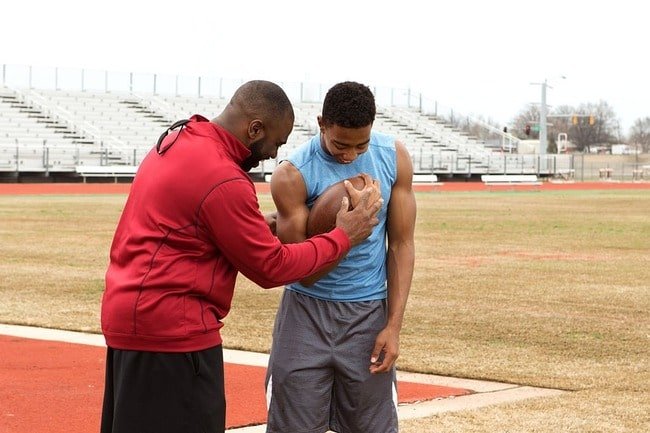
The quality of academic learning is directly proportional to the learning environment and the student’s health. A sedentary lifestyle can cause serious physical, mental, and cognitive problems that impact learning outcomes. Only healthy students can realize the full potential of a learning environment.
It is the job of the teachers and institutes alike to create interactive, fun, and healthy environments. With that said, we have shortlisted a few tips that encourage optimal learning outcomes for the students.
1: Physically Interactive Classrooms
Healthy classrooms engage students at both physical and cognitive levels. Making movement part of the curriculum is a great way to make learning easy and entertaining. Sitting in one place for long periods can lead to boredom, lethargy, and a lack of concentration in students.
However, making students move in a classroom is not as daunting a task as it seems. For younger children, teachers can develop interactive activity corners within the classroom. They can put up boards and papers on the walls for coloring and drawing.
Students can be divided into multiple groups for discussions or learning activities at the college and university levels. Students can then move around within the groups.
Another interesting idea is changing the setting of the class. For example, students could be taken outside in the open (lawns or gardens) for a healthy and engaging learning experience.
2: Engage Qualified Staff
A learning environment is incomplete without proactive and competent teachers. Teachers must meet students’ expectations of their roles and responsibilities. Students trust and feel safe with skilled teachers who can resolve their problems.
For example, a healthy learning environment requires teachers familiar with physical activities and sports. Look for teachers who earned a Human movement science degree to train and teach students and athletes holistically.
Qualified and experienced teachers can conduct health and wellness checks on the students only if they are skilled and experienced. The teachers’ education, competence, and experience are vital for a healthy environment.
3: Develop Holistic Programs
Healthy environments can’t be created without the efforts of the whole community. Leaning institutes should develop community outreach programs that educate and train parents and caregivers about the students’ nutrition and mental and physical wellness.
These outreach programs can be community service in food banks or health and wellness clinics to understand the importance of nutrition and nourishment for a healthy body and mind. Or they can be seminars and lecture series to create awareness about the essential nature of healthy environments for learning efficacy.
Additionally, institutes can develop after-school sporting events in collaboration with other institutes. Sporting events are an excellent way for the whole community to work as a team.
These sporting events will develop physical and emotional strength in students and build teamwork and interpersonal relationships.
In a nutshell, a healthy environment within academic institutes is created through the efforts of all stakeholders; parents and caregivers, teachers, and students. A holistic approach also strengthens the healthy habits of students outside the academic setting and ensures lifelong changes within the community.
4: Create Healthy Role Models
Healthy role models can inspire students to take on lifelong healthy habits. They will provide encouragement and lifestyle goals that will benefit students learning outcomes. Students will be groomed into healthy adults and will have a positive self-image.
Role models are crucial for instilling healthy habits in students since they reflect the success of the effort and discipline that healthy environments teach.
There are multiple easy ways to create role models for students. Foremost, teachers can act as role models for students. Since teachers have the maximum amount of interaction time with students, they can simultaneously coach, inspire, and teach.
Moreover, role models can be created within the students by encouraging and celebrating healthy behavior of the students. This will instigate other students to follow the example of the student role model.
Furthermore, as a community initiative, athletes can be engaged with institutes to inspire and educate students about healthy habits and choices. They can encourage social and life skills that go beyond the playing ground.
5: Develop Innovative and Active Curricula
Although academics take up a significant chunk of a student’s life, physical activity is essential for developing a healthy mind.
Traditionally, sports or physical activities are limited to a very short amount of time, like 20 or 30 minutes of recess during the entire day. Teachers are often reluctant to embark on more active teaching methodologies.
However, according to The American Academy of Pediatrics, the most effective way to increase students’ academic accomplishments is to increase the amount of time spent on physical education. Active learning keeps the students energized and excited about the learning activities.
Also, cognitive functions like retention and concentration are vital for academic learning. Scientific studies have repeatedly proven the impact of physical activity on these abilities.
Although an overhaul of the entire curriculum is desirable, teachers can still incorporate multiple sensory or hands-on class activities to complement the existing lessons. A great way to start is the kinesthetic approach to learning.
Another way to develop physical activity is through different clubs. These clubs can focus on professional sports like soccer, volleyball, etc. Or they can be recreational sports like hiking or camping. This way, even students who don’t feel for competitive sports can still have an active lifestyle.
These clubs also create a sense of belonging, acceptance, and empathy within students. All these emotions further enhance the quality of students’ academic and social life.
Conclusion
A healthy and active body ensures an emotionally stable human being. Only a healthy human being can learn new skills. In addition to academic accomplishment, a healthy environment boosts self-image and self-esteem. A confident adult can navigate a complex social milieu without much difficulty.
A healthy lifestyle also improves the mental health of students. It reduces stress, anxiety, and depression and develops a positive outlook.
We hope you learned something from this article. If we missed something, please let us know in the comments below.







